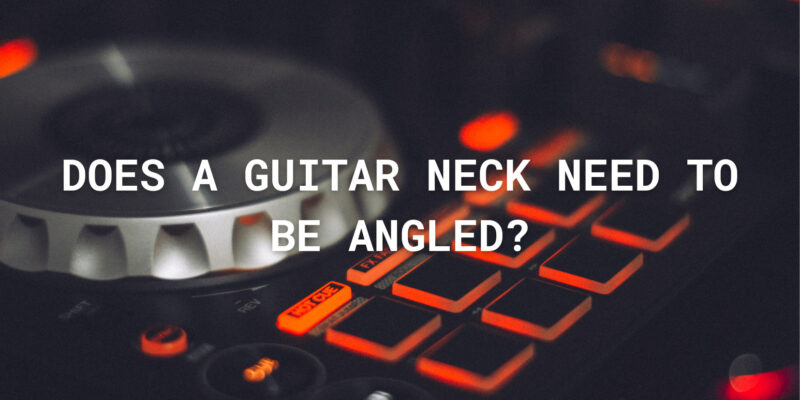Guitar neck angle, or neck pitch, is a critical element of a guitar’s design, affecting playability, intonation, and overall tone. While many guitars have an angled neck to achieve these goals, there are exceptions. In this article, we’ll explore the concept of guitar neck angle and whether a guitar neck necessarily needs to be angled.
1. The Purpose of a Neck Angle
The primary purpose of angling a guitar neck is to optimize intonation and playability. When a guitar is fretted, the strings need to be a specific length for each fret to produce accurate pitches. If the neck were completely straight with the body, it would be challenging to achieve proper intonation, particularly as you move up the fretboard.
2. Acoustic Guitars
In the case of acoustic guitars, the neck angle is typically necessary. The top of an acoustic guitar, or soundboard, is arched and must be set at a particular angle to accommodate the saddle and bridge. This angle ensures that the strings have enough downforce on the saddle to vibrate effectively and produce a resonant, full-bodied tone.
3. Electric Guitars
Electric guitars offer more flexibility when it comes to neck angle. Some electric guitar designs, like the Fender Stratocaster, feature a bolt-on neck that can be adjusted for various neck angles. This adjustability allows players to fine-tune their instrument to their preferences.
However, some electric guitar models, such as Gibson Les Pauls, have a glued-in neck joint with a fixed angle. In these cases, the angle is designed to optimize intonation and sustain while offering a comfortable playing experience.
4. Exceptions to the Rule
While the majority of guitars benefit from a neck angle, there are exceptions. Lap steel guitars and pedal steel guitars often feature completely straight necks that are raised above the body by adjustable legs or mechanisms. These instruments are designed for sliding techniques rather than fretting, and a straight neck simplifies their construction.
5. Compensated Saddles
In some cases, guitars with straight necks may use compensated saddles to address intonation issues. Compensated saddles are designed to lengthen the vibrating length of individual strings slightly, helping to improve intonation, especially in the higher frets.
Conclusion
In most cases, a guitar neck benefits from having a specific angle to ensure accurate intonation and optimal playability. Acoustic guitars, in particular, rely on neck angles to produce their signature tones. Electric guitars offer more flexibility, with some models allowing neck angle adjustments.
While there are exceptions, straight-neck guitars often compensate for intonation challenges using compensated saddles. Ultimately, the need for a guitar neck angle depends on the instrument’s design and intended playing style. Guitar builders carefully consider these factors to create instruments that provide the best possible playing experience and tonal quality.


